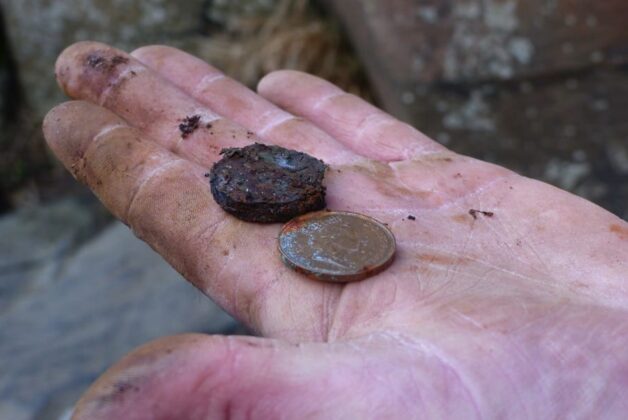Image: An aerial view of White Horse Hill (c) National Trust Images / Mike Calnan/James Dobson
The lines of the 111-metre-long White Horse in Oxfordshire have been cut back into the landscape, bringing it closer to its appearance when it was created
A 3000-year-old chalk figure, Britain’s oldest, has been restored by archaeologists from the National Trust and Oxford Archaeology.
The Uffington White Horse is an 111-metre-long horse pattern, cut into the landscape and filled with chalk.
Examination of previous measured and aerial surveys, proved that parts of figure have narrowed over time, due in part to the gradual encroachment of grass on the outlines of the horse and slippage of the topsoil. The head and neck area of the design had narrowed to less than half of its typical width.
The restoration has seen the lines of the horse design carefully cut back in the turf, to the estimated original edge, and chalk has been re-distributed on its top layer.

National Trust Archaeologist Adrian Cox explained “we don’t know for certain its original purpose”, but “through the efforts of generations of local people, the horse has been cared for, allowing it to survive for thousands of years to become an iconic feature of this landscape.”
During the work to restore the White Horse’s profile, soil samples from the lowest layers of the figure have been taken to see if archaeologists can accurately date its creation.
Similar samples taken in the 1990s revealed the horse to be Britain’s oldest chalk figure, but as dating techniques have improved there is an opportunity to refine the date even further using Optically Stimulated Luminescence (OSL) dating, said the Naitional Trust.
The Scheduled Monument is under the guardianship of English Heritage. Its Senior Properties Curator Win Scutt, added: “We’re delighted that work is being done to better understand this iconic place while it’s returned to its former shape and size.”





